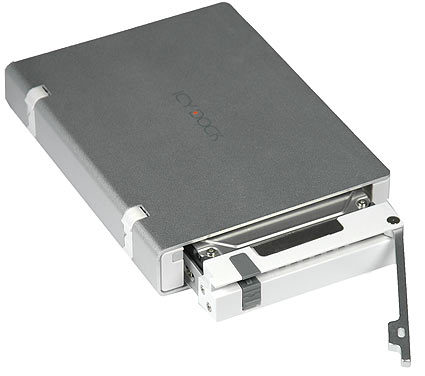IcyDock's MB559 Happily Marries eSATA and USB 2.0
USB 2.0 + ESATA = The Ideal External Storage Solution?
Users who want to boost their storage capacity generally have two options: They can add an additional hard drive to their PC or they can choose among many external storage solutions on the market with varying capacities and form factors. There is also nothing that stops you from assembling your own external storage device, either.
Indeed, there is a significant amount of products on the market. All hard drive makers offer external storage. These products mostly come boxed in nice enclosures, and are constantly being upgraded with backup features to differentiate them from products on the DIY market. The downside is that you often have to pay a higher price than what you'd pay for an enclosure and a hard drive of your choice. Warranty is also an issue since most vendors limit their external storage products' warranties to one year.
Store shelves are loaded with products that will accept one or more hard drive, which mostly differ in their interface options. USB 2.0 at 480 Mb/s, for example, is fairly ubiquitous since it's the common and most versatile interface, supported by both PCs and MACs. Firewire IEEE1394a at 400 Mb/s appears slower on the surface, but it in fact normally offers slightly better performance than that of USB 2.0. If you want to go really fast and hook up external storage devices with virtually no bottlenecks, you need IEEE1394b at 800 Mb/s.
However, ever since Serial ATA got its external eSATA brother, there are more and more products that allow you to hook up Serial ATA hard drives (150 and 300 MB/s interface speeds) to any computer with an eSATA interface. Obviously, eSATA offers exactly the same bandwidth as internal SATA, while it uses different cables.
So, what does the ideal external hard drive look like? It should offer all possible interfaces. However, we believe that many users can live without Firewire, making a USB 2.0 / eSATA enabled drive a very good choice. eSATA is the first choice for obvious reasons, and USB 2.0 can be used when on the road. We selected the IcyDock MB559US to see how well this works.
Join our discussion on this topic
Get Tom's Hardware's best news and in-depth reviews, straight to your inbox.
Current page: USB 2.0 + ESATA = The Ideal External Storage Solution?
Next Page IcyDock MB559US-1S Details
Patrick Schmid was the editor-in-chief for Tom's Hardware from 2005 to 2006. He wrote numerous articles on a wide range of hardware topics, including storage, CPUs, and system builds.
